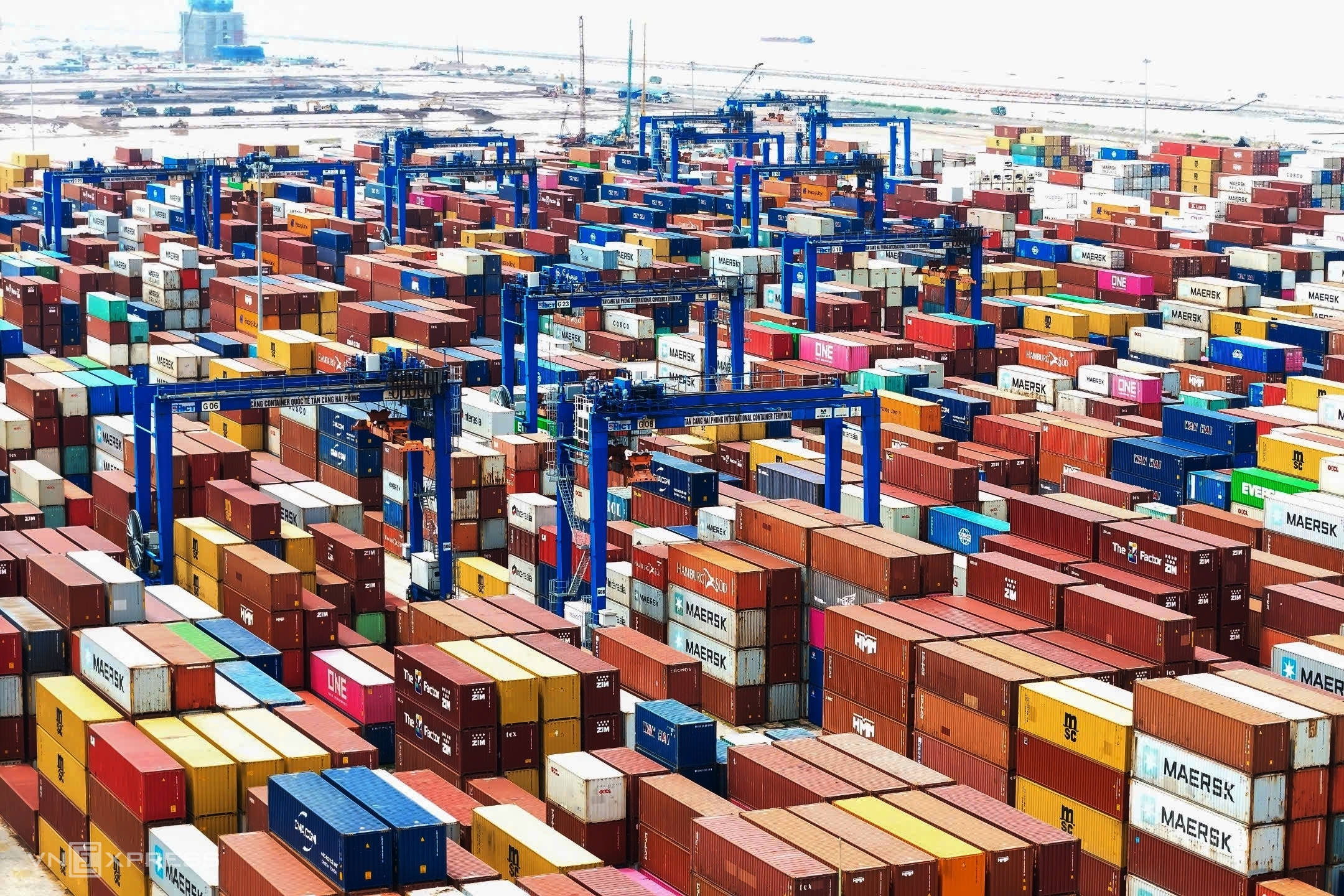The Private Economic Development Research Board (Ban IV) highlighted this information in its 2025 Business Confidence Report. The report is based on a survey of over 1,500 businesses conducted in June by Ban IV in collaboration with VnExpress.
According to the survey, 51.6% of exporting businesses plan to seek new markets to address tariff risks. This solution is also a priority for domestic production and business groups (34.9%). They also tend to increase the localization of production chains (20.8%) and seek input material markets from other partners (14.3%).
Conversely, businesses operating solely domestically tend to be more cautious, with 24.4% choosing to "find new markets".
"Tariff risks affect export and domestic production businesses because they may be part of a supply chain with inherent limitations," the report stated.
 |
Part of Lach Huyen Port, Hai Phong, 21/1/2025. Photo: Le Tan |
Part of Lach Huyen Port, Hai Phong, 21/1/2025. Photo: Le Tan
By sector, businesses in processing, manufacturing, services, agriculture, forestry, and fisheries prioritize finding markets outside the US. Meanwhile, construction companies tend to wait and focus more on localizing production chains. Among the adaptation solutions, only a few choose to increase selling prices to the US or increase imports from this market in response to tariffs.
Since April, SK Foods, a company specializing in rice flour products such as straws, vermicelli, and noodles, has planned to shift its export market to the EU, South Korea, Japan, Singapore, and the UAE. Market expansion is also a solution that Thanh Cong Textile Garment has put forward to respond to fluctuating global conditions and ensure its business plan.
In fact, according to the survey results, businesses across various sectors believe they are significantly affected by US countervailing duty policies. The percentage of businesses rating the impact as "serious/very serious" is high, such as in processing and manufacturing (nearly 64%), services (65.8%), construction (62%), and agriculture, forestry, and fisheries (61.2%).
However, Vietnam has the advantage of diverse markets, including 17 free trade agreements (FTAs) with over 60 countries and territories, along with 70 bilateral cooperation mechanisms. This is a significant advantage, helping businesses reduce their dependence on a single partner. The Vietnam Association of Seafood Exporters and Producers (VASEP) also advises businesses to effectively utilize FTAs such as EVFTA, CPTPP, and RCEP to expand into other markets.
In addition, the US accounts for about 13% of total global imports. This means Vietnamese businesses still have significant potential, equivalent to 87% of the world market, to exploit and diversify their export markets.
To facilitate the search for new markets, businesses have proposed that the government promote trade promotion activities and expand FTA negotiations with other potential countries. With existing FTAs, businesses recommend that management agencies increase guidance to help them take advantage of tax incentives from trade agreements.
Furthermore, developing domestic supporting industries is essential to reduce dependence on imported raw materials and components. Businesses also recommend support mechanisms for supply chain shifts or expanding export markets beyond the US and China, such as credit support or corporate income tax exemptions and reductions for a certain period.
They also suggest that the government should implement measures to enhance the competitiveness of domestic goods by reducing taxes, fees, and supporting input costs to alleviate pressure on prices. An early warning system for potential trade conflicts and tariff policy fluctuations from major partners also needs to be established, giving businesses time to prepare and respond.
Thuy Truong












